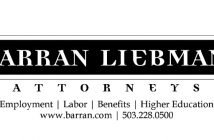(Graphics courtesy of Melissa Goddard)
What happens when your most valued employee also poses your greatest risk for fraud?
When you picture a fraudster what picture comes to mind? Bernie Madoff? A high-powered middle-aged executive? A public official who took advantage of his position and spent public money on the finer things in life? The reality of who commits fraud in today’s workplace has changed significantly from what used to be. If you live in our beautiful Central Oregon communities, you have heard, read or seen the shocking reports of employee embezzlement that have rocked our communities in the past few years. You may have noticed that these reports are not of the fraudster you pictured in your mind at the beginning of this article. With more women in workplaces, mounting financial pressures and older generations working well into their retirement years, the picture of who commits fraud is no longer the stereotypical man you may have pictured in your head. Staggering losses caused by long term employees, women and seniors who were highly respected and admired in the company are occurring at an alarming rate. You may have also wondered how such frauds with such staggering amounts can happen, how the company affected did not realize that fraud was occurring or you may wonder how you can protect your own business from the same fate. Awareness and proactive action make a substantial difference when it comes to preventing fraud in the workplace.
The definition of Embezzlement is, “theft or misappropriation of funds placed in one’s trust or belonging to one’s employer” according to the Oxford Dictionary. Unfortunately, occupational frauds such as embezzlement can happen to any company. In fact, small businesses with less than 100 employees experience at occurrence of fraud more than any other size of company (30.1 percent) and the median losses of $150,000 were the same as the largest corporations, those with more than 10,000 employees, experienced according to the ACFE 2016 Report to the Nations on Occupational Fraud and Abuse. As you can see, the potential cost of frauds that occur within the workplace are substantial with the ability to cause significant impacts such as business closure, loss of business, loss of reputation, legal costs and more.
The good news is that prevention of fraud is possible when companies are proactive and understand how to protect themselves and their companies. Many times, as owners of companies and business leaders we believe that our long term trusted employees would never betray the trust built by committing fraud. After all, these employees are friends and in many cases, we regard them as extended family. The person that is the most trusted, loyal employee who never misses work is not only your most valued asset but could also be the person who is your greatest risk when it comes to fraud in the workplace. Understanding that frauds occur based on when three elements are present: Financial Pressure, Perceived Opportunity, and Rationalization. Together these points are known as the Cressey’s Fraud triangle. If a long standing employee is experiencing financial pressure or perceived financial need, has the opportunity and can rationalize the theft they may commit fraud regardless of the relationship with the employer. These people know that they are trusted and many times rationalize that they are just taking a loan and will pay it back as soon as the pressure is relieved. According to the ACFE, 88.3 percent of employees who committed crimes had no previous record of such crimes and 82.5 percent had never been disciplined or terminated for such activities. Shockingly, employees are employed for less than one year only made up 8.2 percent of occupational frauds, while those are employed at the victim company for more than 5 years made up 49.4 percent of cases.
Thankfully simple steps can be taken to protect company assets from employee misuse. Please keep in mind that these steps can and should be customized for the size of business, type of assets involved, and type of business.
1. Have a yearly fraud risk assessment conducted by a CFE.
a. A fraud risk assessment is a tool that is used by an organization to systematically identify where and how fraud may occur and who may be in a position to commit fraud. This tool drives an organization to identify fraud risk schemes as well as respective internal controls that may prevent or detect these schemes. Additionally, a fraud risk assessment will measure the detective or preventative internal controls already in place to ensure they are designed and operating effectively. (ACFE)
2. Enact a Fraud Policy within the company, provide fraud training to all employees including how to report suspected frauds. Employee tips continue to be the leading detection method for frauds within organizations.
3. Enact an open-door policy. Know your employees including their families, lifestyles and stresses/problems so that you can potentially notice red flags.
4. Put Internal Controls in place such as:
a. Bank and credit card statements should be delivered reviewed by someone other than the person writing the checks.
b. Checks and debit memorandum should be reviewed with the statements.
c. Checks and wire transfers should require two signatures and signatures should be verified.
d. The completed bank reconciliation, with the monthly bank statement attached needs to be reviewed by at least one other party (Two is preferred due to the possibility of two employees working together to commit fraud)
e. Checks received in the mail should be immediately endorsed by the individual who opens and processes the mail. This person should not be the person who deposits the checks or inputs into the accounting system.
f. After checks are properly endorsed, the accounting or bookkeeping department should take charge of the checks for deposit.
g. Purchasing records should be reviewed.
h. Appropriate approval and signing authorities should be put into place.
5. Do not use signature stamps.
6. Do not pre-sign checks for times when out of the office.
7. Finance or accounting personnel should not be signers on bank accounts.
8. Conduct surprise spot checks or audits several times a year.
9. Hire a CFE or other outside party to review all new employee, independent contractor, vendor and customer set ups to ensure validity and proper set up.
10. Complete background checks on all new employees.
11. Obtain fidelity insurance to protect against potential losses.
12. Require Vacations and cross-training.
13. Know the Red Flags for Employee Fraud.
CHECK Employees living beyond their means. (Luxury homes, cars, items, frequent, lavish vacations, private schooling for children) Note: Many times employees will contribute this to an inheritance, lotto or gambling winnings, etc. Even when it is a trusted employee, verify the story.
CHECK Employee financial difficulties
CHECK Unusually close association with vendors and/or customer.
CHECK Control issues.
CHECK Refuses to take vacation or is resistant to cross training.
CHECK Divorce/Family Problems
CHECK Addiction problems
CHECK Complaints about unfair treatment or compensation
CHECK Change in behavior such as irritability, suspicious, or defensiveness.
CHECK Excessive pressure from within organization.
As our community continues to grow, we likely will continue to hear an increasing number of stories such as the embezzlement cases we have learned about recently unless we join together to prevent fraud and protect our wonderful community from these types of crimes. As they say, “An ounce of prevention is worth a pound of cure”. Nothing could be closer to the truth when it comes to fraud in the workplace. The face of fraud has changed, now is the time to take the steps necessary to protect your company.
Melissa Goddard, CFE PI, FACT Financial Investigations, LLC
melissa@factfinancialinvestigations.com, 541-241-6250





